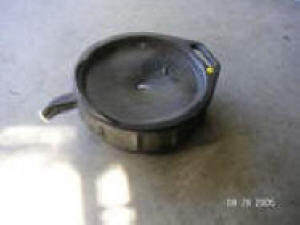| |

|
|
|
|
||
Changing Engine Oil in a Lamborghini Diablo
Besides the brand of oil we have to consider the oil grade. Again much has been written on the subject. Oil grade is essentially oil thickness. A thick oil will flow slow and has a high grade number (e.g. 40-50). A very thin oil will have a lower number (e.g. 10 or 20). Without getting into details, these grades are measured in terms of the viscosity of the oil. Viscosity is a measure of how long it takes a fixed ammount of fluid to flow through a small hole. For car engine oils viscosity numbers range from 5 to about 60. When an engine is cold you need a light oil with a viscosity of 10-20. This light thin oil quickly lubricates the engine as it warms up. However as the oil gets hot it does not protect the engine as well against friction as a thicker (lower viscosity) oil. The problem with using a thick lower viscosity oils is that when they are cold they are very thick and do not spread over a metal surface to lubricate it well. For this reason most car engine oils are a mixture of grades. For the 6L Diablo, Lamborghini recommends 5W-40 or 10W-40. For a 1997-99 Diablo they recommend 10W-40 or 10W-50. This mixture of oil grades offers the high viscosity oil for cold startup and the low viscosity (thick) oil for when the engine is hot. I like to use Mobile 1, 10W-40 Oil.
Next we need to expose the oil filter. To do this you have to remove one of more panels under the car. In the 6L Diablo the oil filter can be seen by removing one triangular panel by opening one screw (fig 9). However in order to put back this nut and bolt and to better access the filter you really need to remove the nearby panel as well (fig 10). On a 1999 Diablo the panel is much larger and is held in place by about a dozen screws. We then drain the old oil out of the engine. Use a Torex socket wrench to fit into the large screw on the underside of the engine and turn the nut anti-clockwise (fig 11). It may be rather tight use a lever if necessary. The removed nut and washer as well as the Torex socket is shown in figure 12. (Note the plug is sitting in Mobile I oil bottle cap - may be confusing). Before you remove the oil plug be sure to have the oil collection pan directly below the engine. Use gloves. Also let the car engine cool down if was recently used. This oil gets hot! At first the oil gushes out. Allow at least 20 minutes for it all to drain (fig 14). If you are a real purest you can lower the car temporally to make the car level to get the last of it out. Be sure not to crush your oil collecting pan! Then raise the car again. Next you need to remove the old oil filter. Using a tool like the one described above screw open the filter. Twist anti-clockwise to open it. When it turns freely be sure to have an oil collecting container directly under it. Again use gloves. There are a lot of treads on the filter so it takes time to screw it out. About one pint of oil will burst out when you remove the filter. Be prepared for it. There are probably a number of equivalent new filters you could use. I like to use the one Lamborghini uses. It's a UFI filter (UFI part # 23-110-02). See figures 15 and 16. Other equivalents are FIAAM (#FT4653), FRAM (#PH 2842) or TECNOCAR (#R67). You can order filters over the web. For example at www.italiancarparts.com or www.lambostuff.com. Other cars may use different filters. Check your car manual. In all cases the new filter must be filled with oil before attaching it to the engine. It takes about a pint of oil to fill it. Then use your finger to smear a film of oil along the rubber gasket on the top of the filter (fig 17). Then screw new filter in place (fig 18). Tighten it up with a tool such as the one shown in figure 7. It does not have to be really tight. We now need to add new oil to the engine. First replace the oil plug under the engine. Tighten it well but at the same time do not rip the treads. Lower the car and check it is level with a spirit level as shown in figure 19. Locate the oil filler cap (right hand side of engine) and remove it (fig 20). Surround the area with a towel and add an oil funnel (fig 21). Locate the oil dip stick (left hand side of engine) and remove it slightly so air can get out of engine sump (fig 22). For a Diablo you will need to add at least 13 quarts of oil. Let the oil settle for a few minutes and then check oil level on dipstick. The total capacity for the engine (counting the oil in the filter) is about 15 quarts. After each further quart check the oil level five minutes later. Take care not to overfill. The oil levels should be between the MIN and MAX marks on the dipstick (fig 23). Next start the car and let it warm up a about 1200 RPM. When warm check for oil leaks on the floor. If none, rev the engine up briefly to 4000 RPM to increase the oil pressure. Hold for one minute. Then turn off the engine. Raise the car one last time. Check for any oil leaks. If none replace the panels on the car's undersurface. Remember the engine is hot at this stage. Take care. Drive the car on a short local trip. Let it cool down for an hour or two and then do one final check of the oil level. Adjust if necessary. Your car is good for a few thousand miles at least!
|
|||||
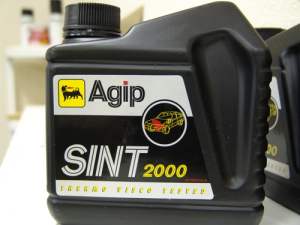 |
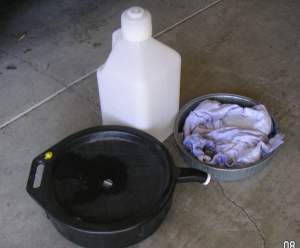 |
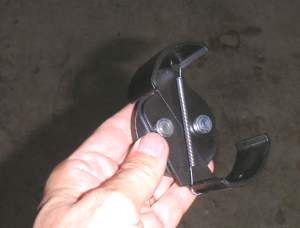 |
|||
| Fig 2. Agip oil as sold in Europe | Fig. 3. Oil collection containers |
Fig 4 Oil filter removal tool |
|||
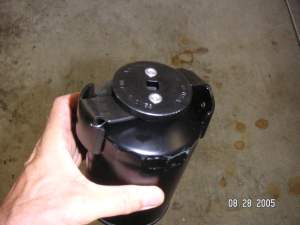 |
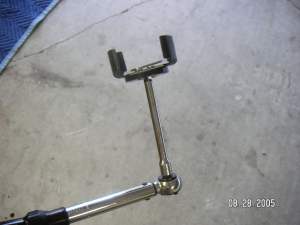 |
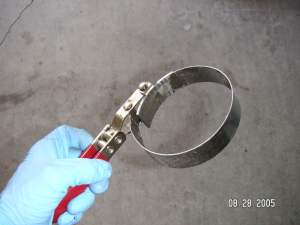 |
|||
| Fig 5 Oil filter removal tool attached to a filter | Fig 6 Oil filter removal tool attached to socket wrench. | Fig 7 Oil filter tightening tool |
|||
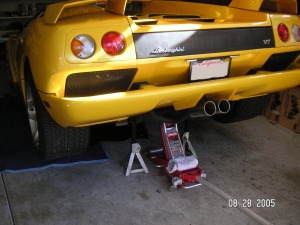 |
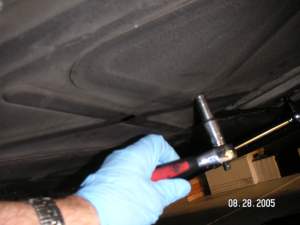 |
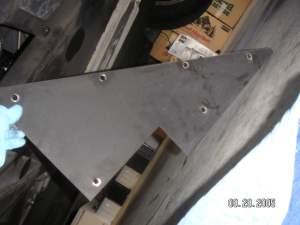 |
|||
| Fig 8.
Raise car. Note jack stands
|
Fig 9. Remove panel to expose oil filter. | Fig 10. Remove this panel as well | |||
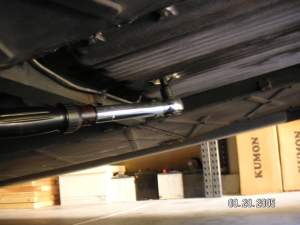 |
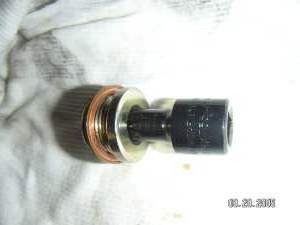 |
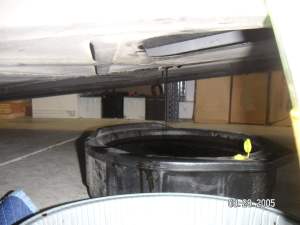 |
|||
| Fig 11. Open Oil
drain plug
|
Fig 13. Engine oil plug and copper washer | Fig 14. Oil draining into collecting basin | |||
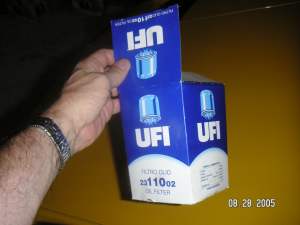 |
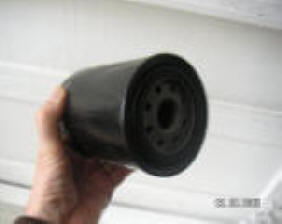 |
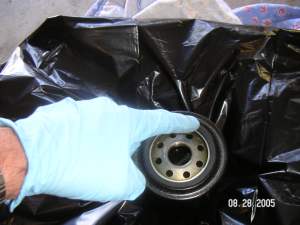 |
|||
| Fig 15. New UFI oil
filter
|
Fig 16. New UFI Oil filter | Fig 17. Cover rubber gasket with oil | |||
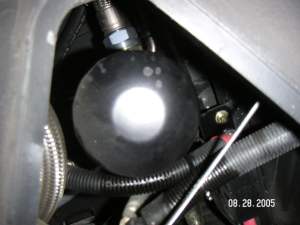 |
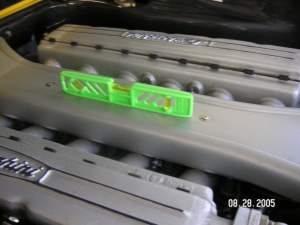 |
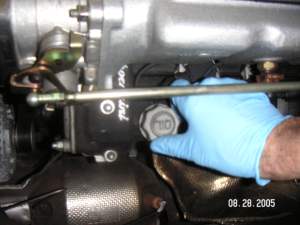 |
|||
| Fig 18. New filter installed |
Fig 19. Check car
engine is level
|
Fig 20. Open oil filler cap. | |||
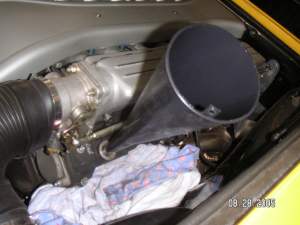 |
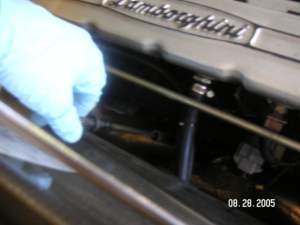 |
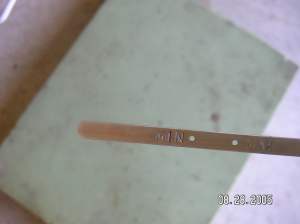 |
|||
| Fig 21. Add funnel and towel | Fig 22. Remove oil dip stick | Fig 23. Check oil level. | |||
